
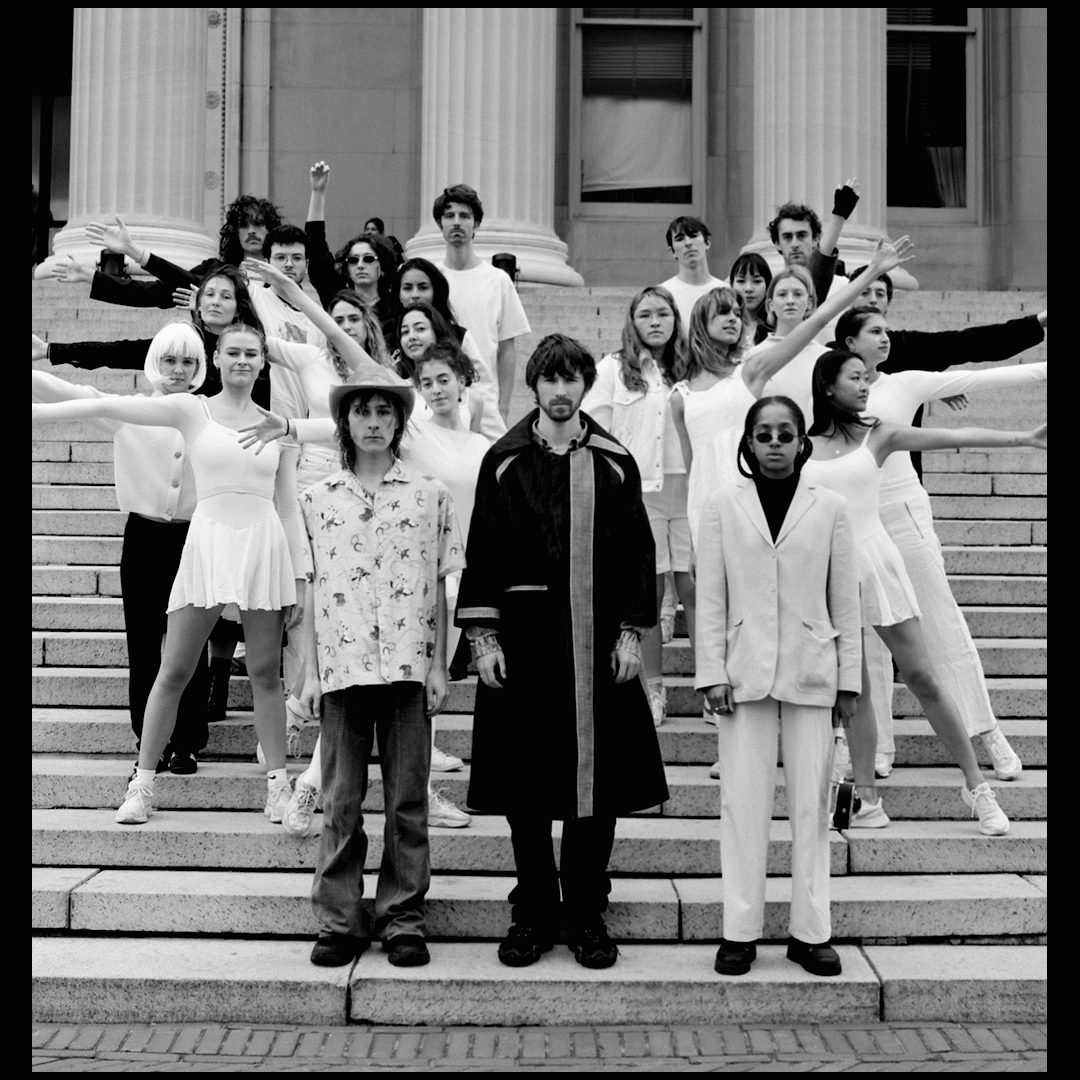

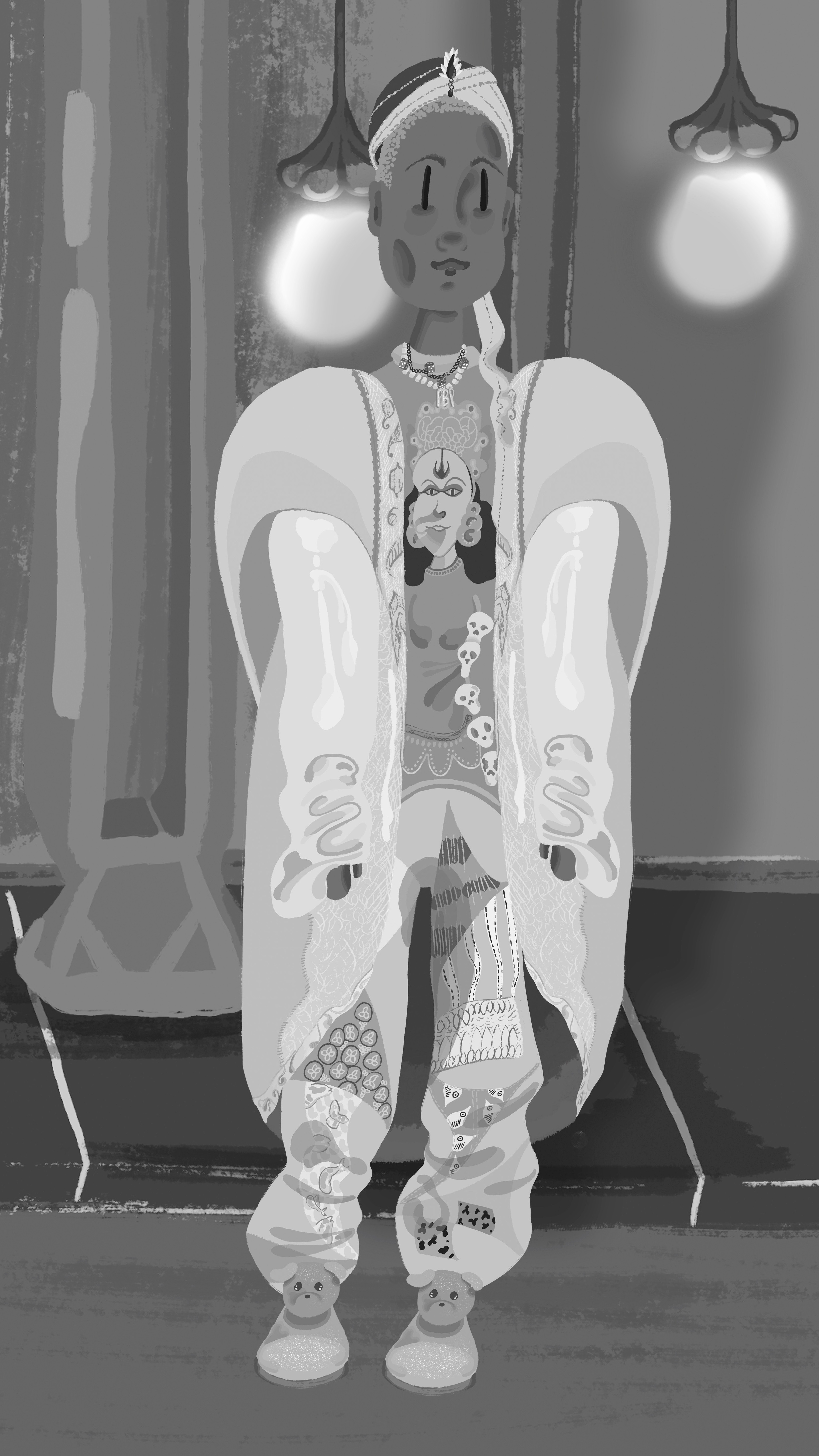

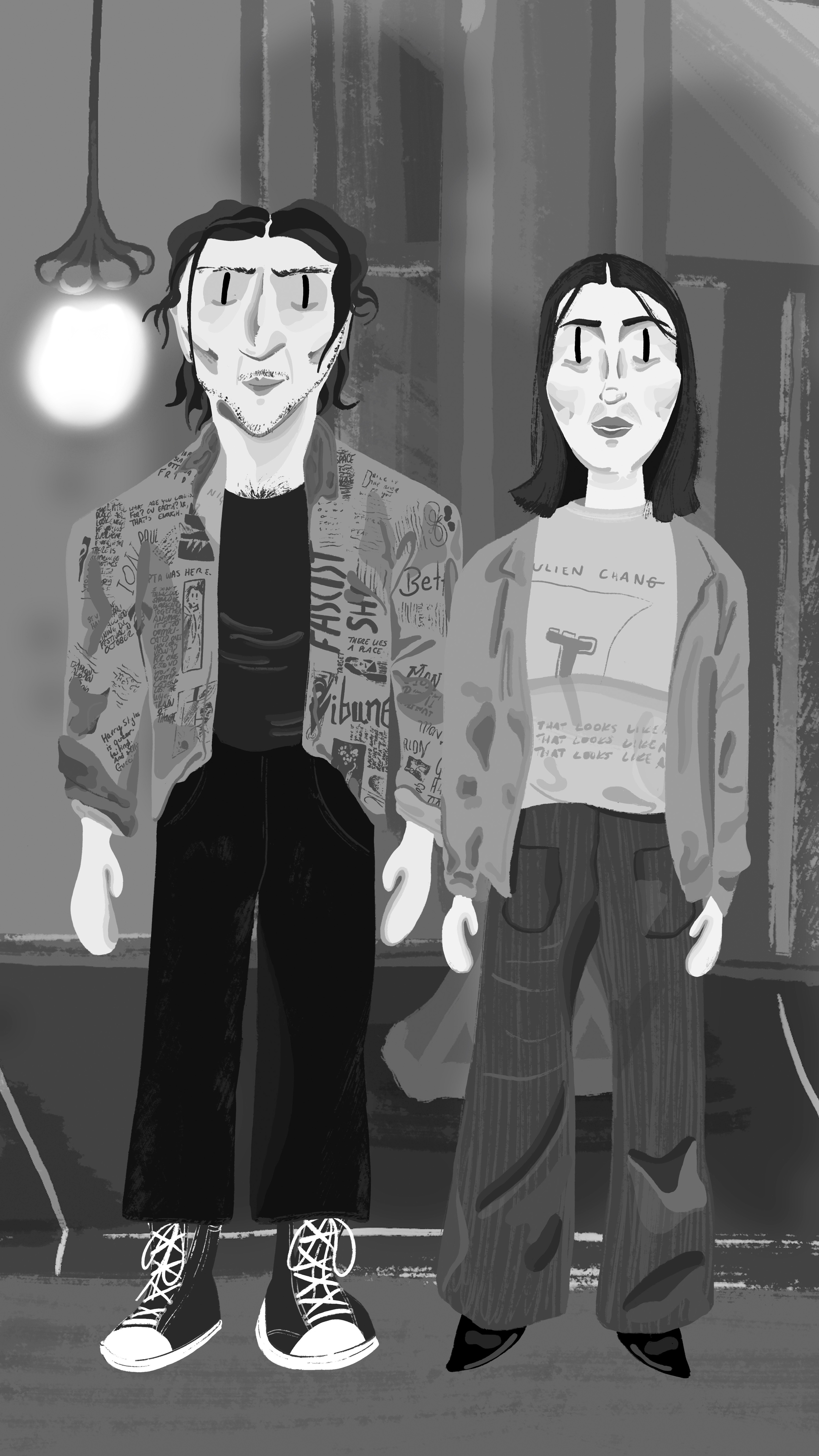
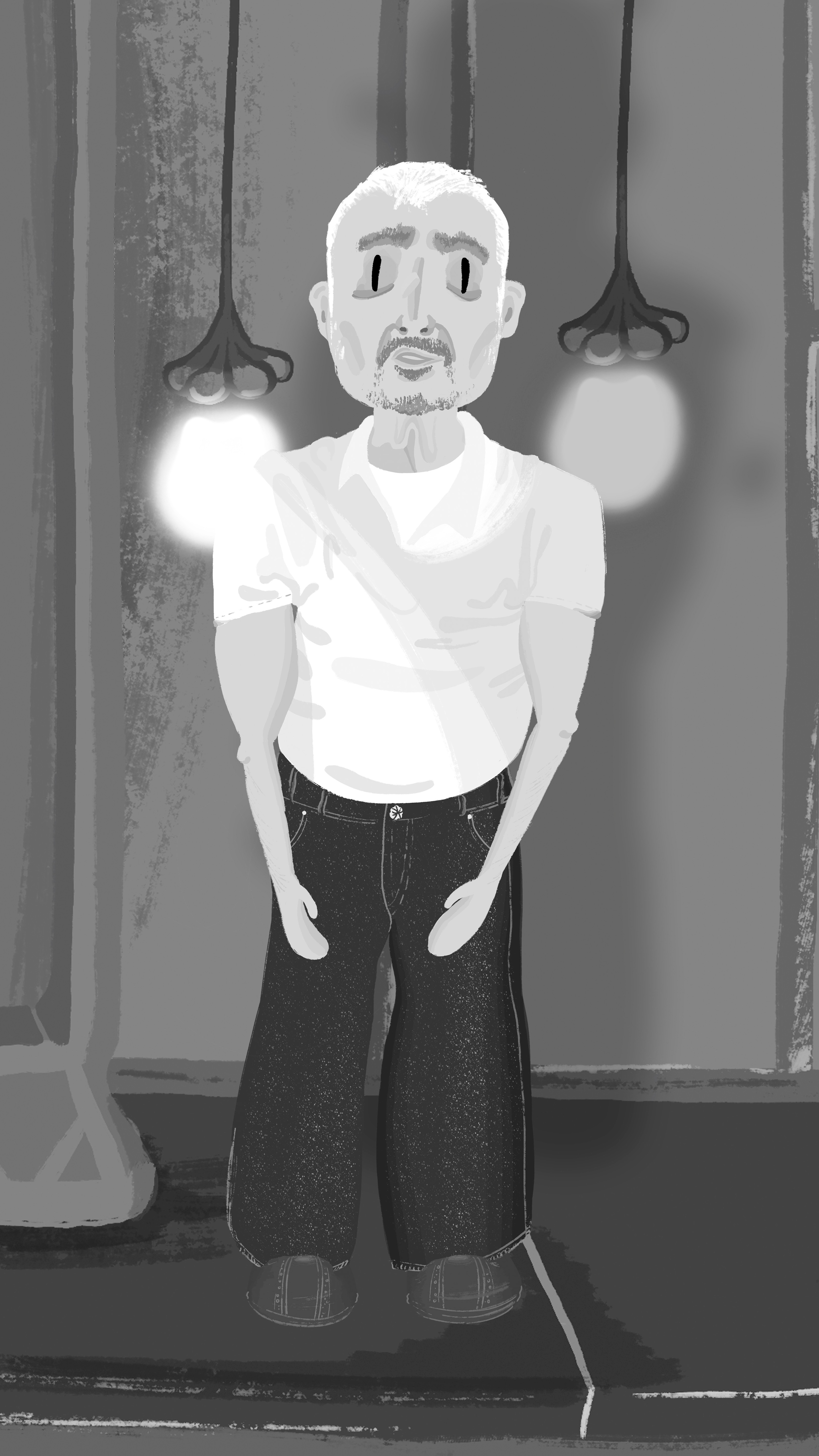
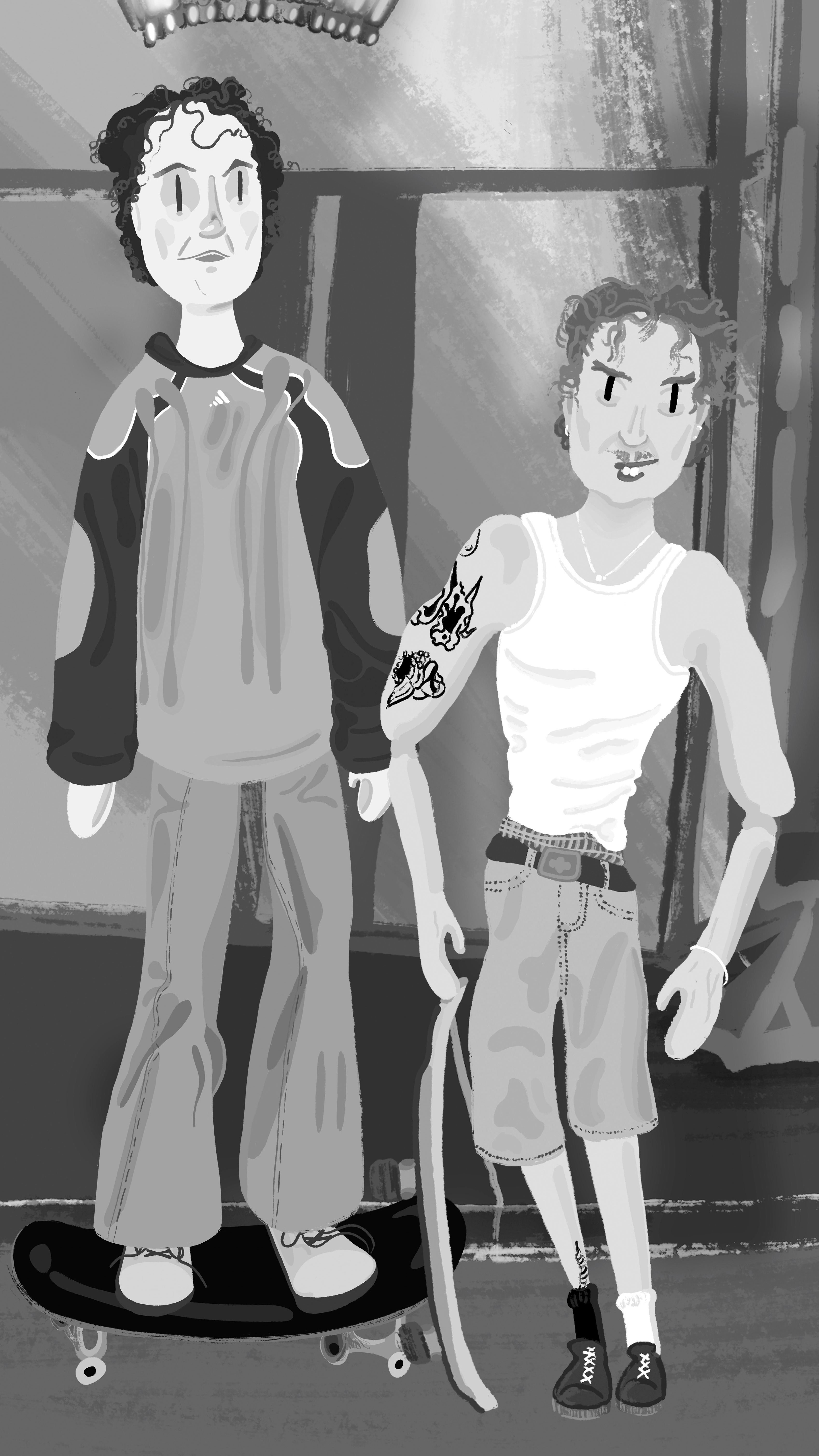
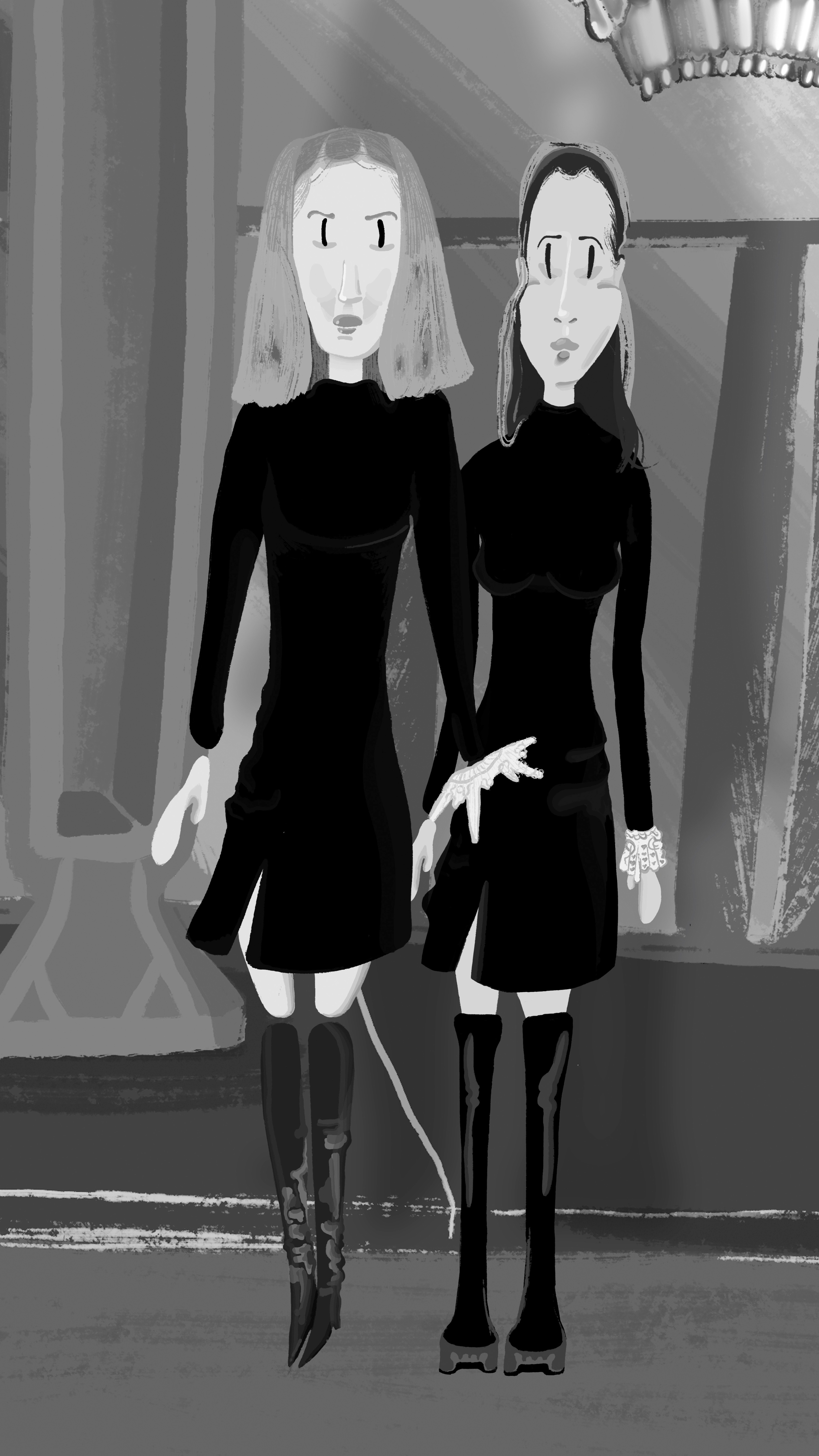
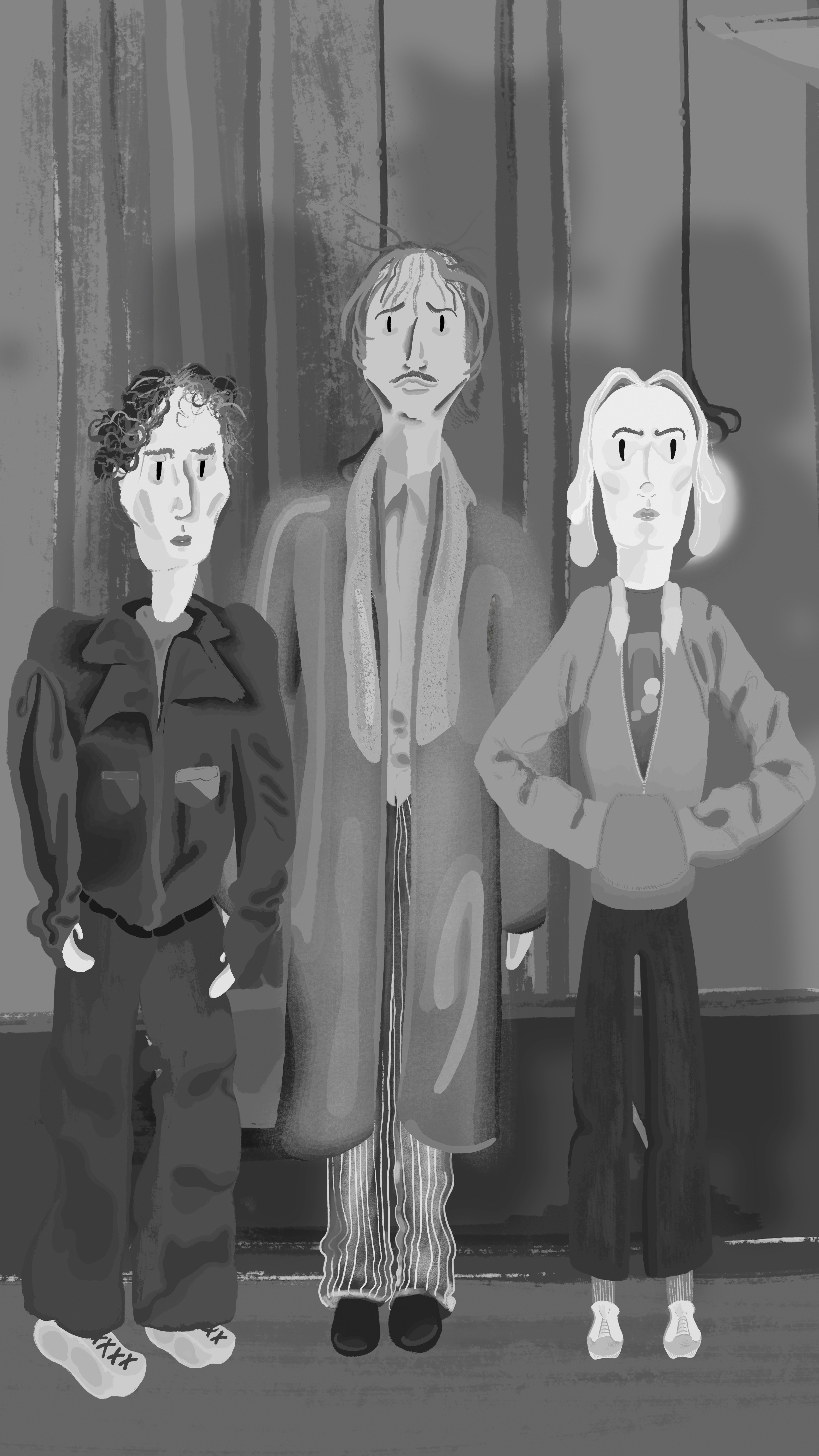
The sixth and seventh episodes of “Sankyo Stream of Consciousness” had been set to take place in Tokyo and at Austin’s South by Southwest festival. They would have marked a period of focus for Sankyo, the show’s protagonist, a newly relentless drive to ask questions and be seen. Since Sankyo embarked on his quest to interview the director Paul Thomas Anderson in March of 2019—a quest navigated through separate interviews with a journalist, a pop star, and creative students and professionals—he has too often found himself distracted by imaginative interludes or lost in dreamscapes, as has Finch, who until Episode Five was Sankyo’s creative partner.
In a world where film festivals barely exist and travel is mostly for reminiscing over, Sankyo instead spent the duration of Episode Six deposited in a half-animated realm, confronted about the flaws in his approach and his intended subject’s worthiness. Fantasy dominates the episode, secret spaces populated by strange figures, which provide a kind of emotional clarity. By the episode’s end, Sankyo might emerge less absolutist, and more skeptical, and more sensitive.

I started illustrating and storyboarding for Episode Six this past July, after deciding that I wanted to animate most of the episode. Inspiration came from collected photos of urban landscapes in Brooklyn, Seoul, Tokyo, and Stockholm, from Spirited Away and Gordon Matta-Clark’s seismic incisions into Paris buildings. Dancing to Troye Sivan’s “Take Yourself Home” made me certain some form of propulsive movement was needed. I remembered Sankyo’s failed attempt to interview Maude Latour in Episode Two, and wondered what would happen if they encountered each other again. Early renderings placed emphasis on a collision of textures, of digital and stop-motion animation, and of man-made materials and natural formations. - Fergus Campbell
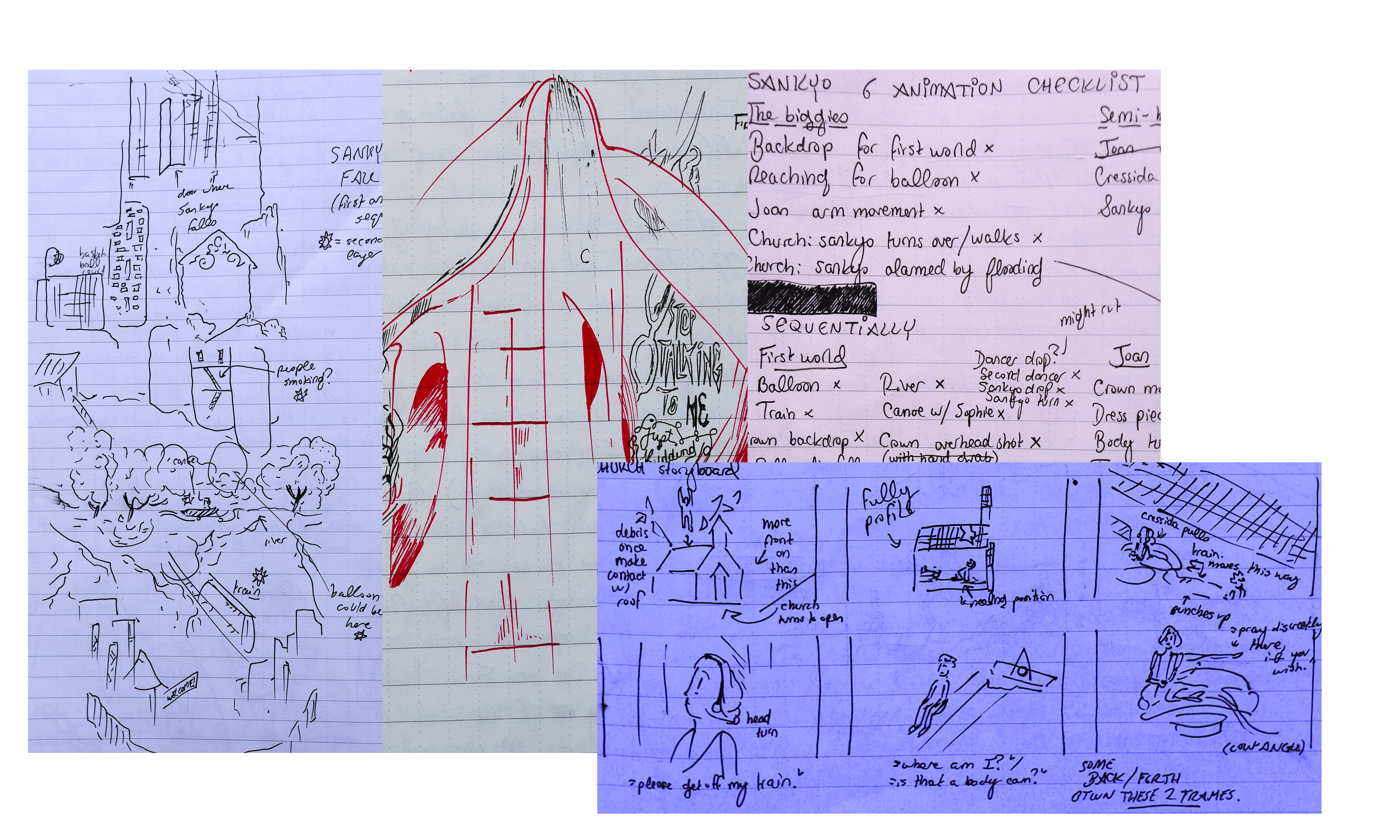


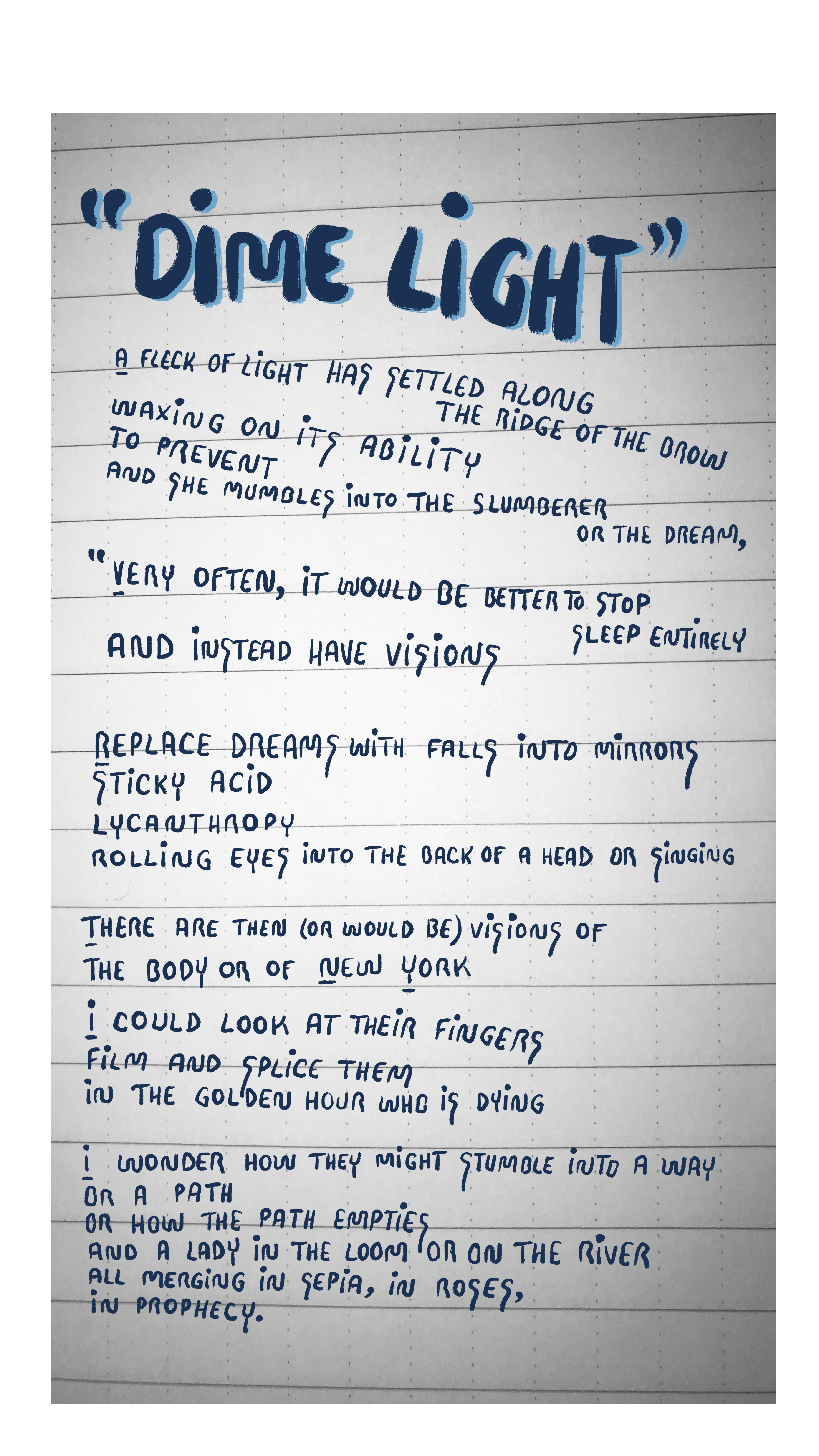
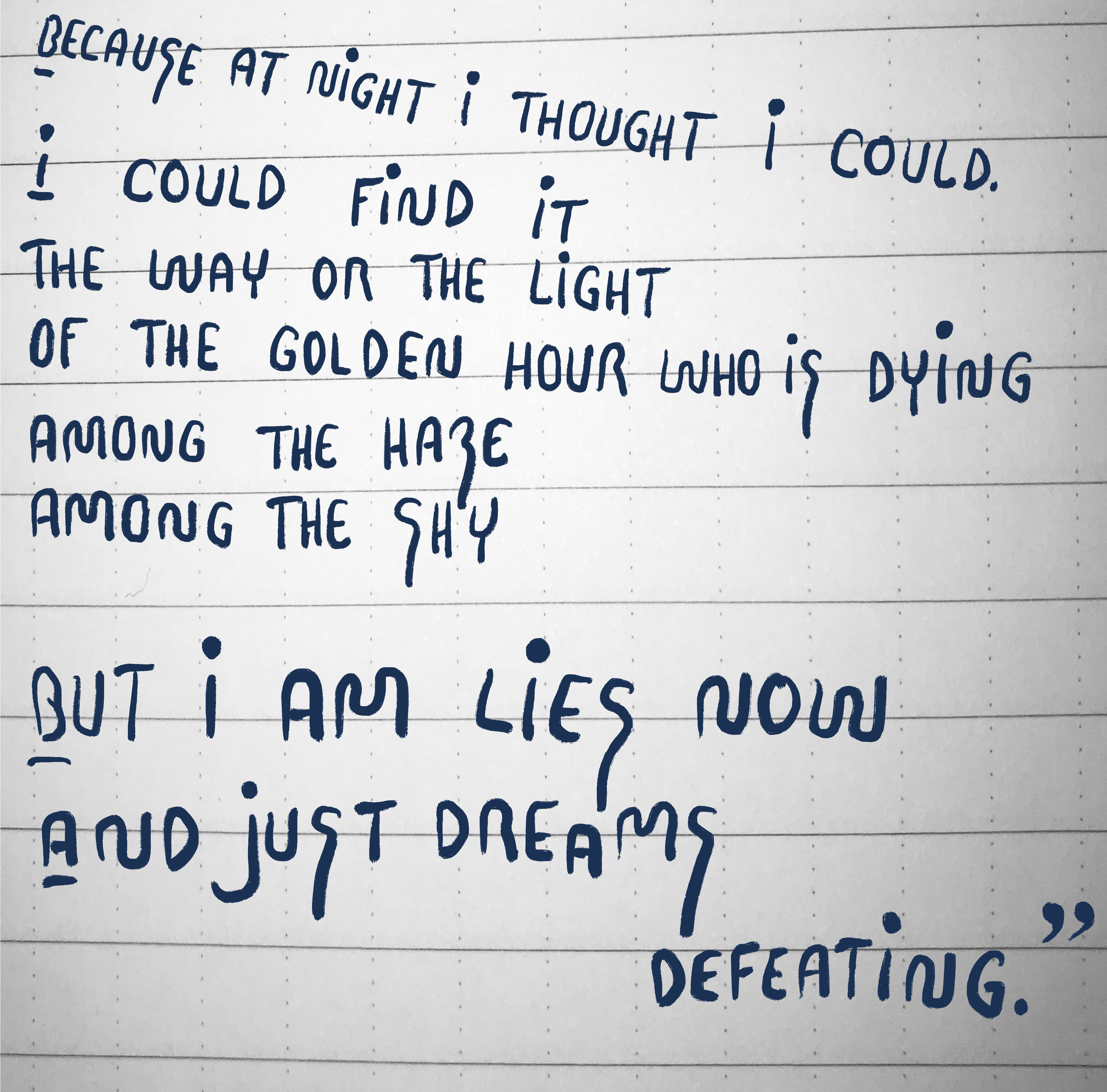
Joan Tate (she/her), who wrote and recorded poetry for the episode, is a trans woman studying creative writing, poetry and classical Latin at Columbia University. After having grown up moving around Virginia as a fifth-generation pastor’s kid and finding her roots in Appalachia, Joan has since become enamored with the living and transient quality of the New York School poets such as Eileen Myles, Alice Notley, and Frank O’Hara. She attempts to blend these influences with a southern background and female identity that has long been obscured. She has been published in Columbia's Quarto magazine and her work has been featured in art shows hosted by Ratrock. When she’s not writing about God, ghosts, or guilt, she often finds herself reviewing the swings in public parks and programming Outsider Music for WKCR-FM-NY.
The piece titled “Dime Light” is really the sum of a moment in my life in which everything was closing in order to open. It’s in many ways a reckoning with having to coax myself into the light. I’d just come out as a trans woman a little over a month before when Fergus asked me to write something for his project. I was cooped up in a rather conservative area, isolating both due to COVID and due to not wanting to be seen or harassed before I could pass as a woman. I’d make long walks to a nearby Confederate graveyard with my books and the occasional phone call with friends to keep me moving rather than stagnant. Out of this time and the turbulence of transitioning, a lot of the images in the poem came forward, of which the base is this speck of light on someone’s face as they’re trying to sleep. It’s light who has travelled a long way and has lost themself, or found an important element in the destination and journey to be confusing or dull or pointless or full of potential they don’t know what to do with. It’s a meditation on being lost and knowing that a path will open. It’s a product of waiting.
The prompt Fergus gave me was movies you’re surprised haven’t been made, and I’d been watching a lot of movies by Yasujiro Ozu and Akira Kurosawa and Agnes Varda for the first time and had just picked up meditating daily to try and calm down the horrific anxiety I’d been living with the past couple years before coming out, so my mind was trying to project something internal, something to meditate on that was both from those intimidating minds and from myself. What I really wanted to see was a reflection of myself. Not in terms of transness or poetry or my own journey, but in the case of something tired and dreaming and waiting for a way or a path to emerge from nothing. By providence or mystery. It’s in many ways too boring to be made into a movie. Too liminal with no sturdy bounds keeping it together. Since writing it, I’ve found what I think is a way, or at least I’ve found peace in it and found a way to carry on and become. I’m very appreciative of this opportunity as in many ways this was one of the first works to come from myself as Joan, which is exciting to project and see made real.
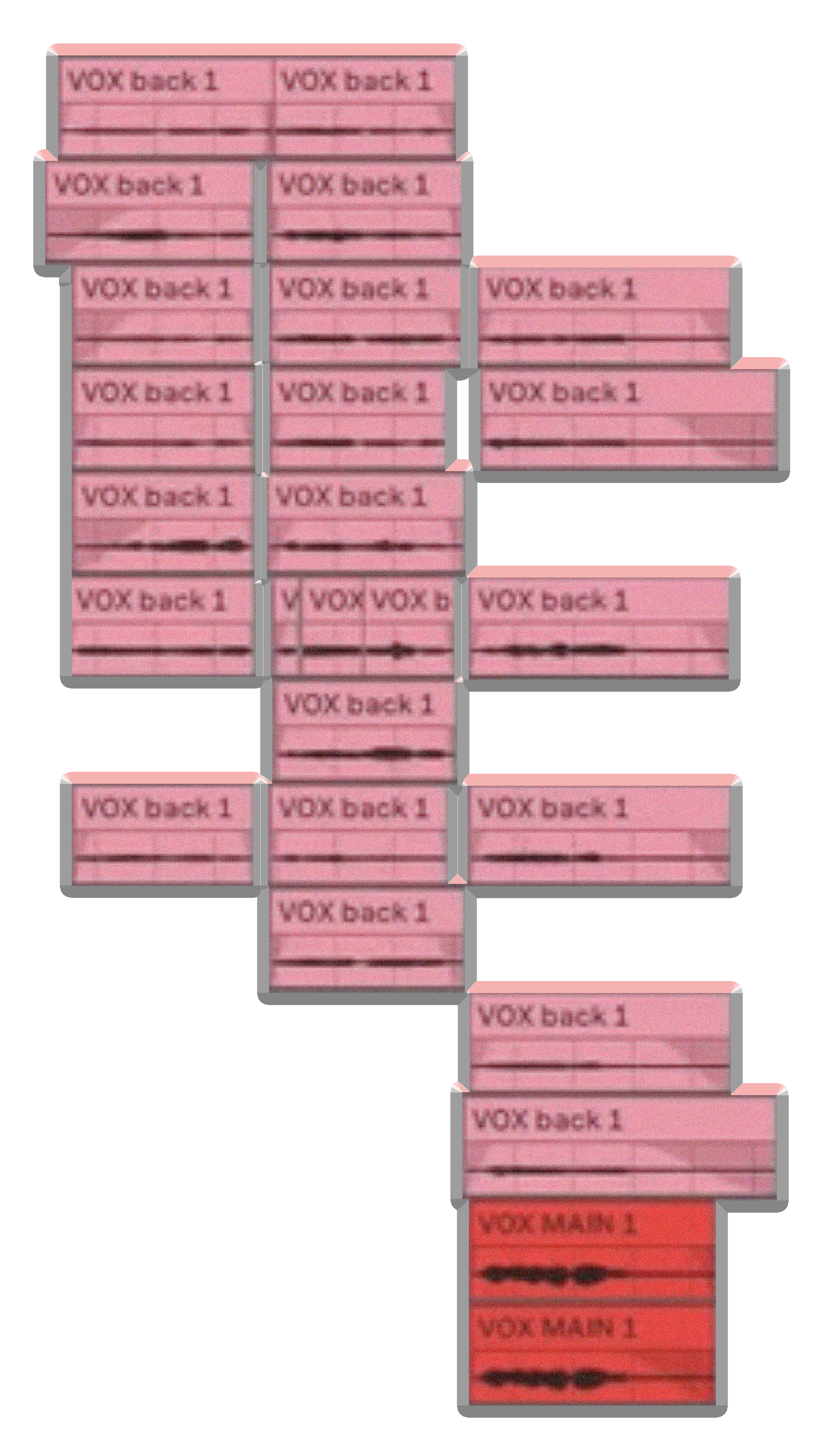
Sarah Kinsley (she/her), who wrote and recorded “Sankyo’s Fall” (featured in the episode’s finale), is an independent artist based in New York City studying at Columbia. She first entered the music scene in 2018, after landing a feature on Grammy-nominated artist ford.’s album, (The) Evening, with their electronic lo-fi single “Craving.” As she experimented with her solo music, Kinsley developed a growing collection of new songs, releasing two singles, “Wine Stained Lips” and “Open Your Eyes” in 2019, and her debut six-song EP, The Fall in April of 2020. Kinsley began composing at age 14 and had her first orchestral work, “Être,” a concertino for Piano and Symphony, performed at Elfers Hall by The Hotchkiss School in 2018. During the pandemic, she is continuing to write and record her upcoming music.
My music for Sankyo Stream was deeply inspired by colors and these sort of flashing moments that I wanted to capture on the piano and through the layered vocals. Deep green, a rolling river, one clump of a cloud on a field, dewy sunrise. I wrote the lyrics to be intimate, raw. Sankyo you’re my best friend. Ask me any question. I have a confession. Each vocal recording seems to capture a whisper, even the tiniest consonants. There’s a sort of stillness and haunting quality to these words as well. Sankyo, where’d you go? The echo of the voice as it bounces back and forth between the ears. I knew what I wanted to accomplish with the final piano arpeggiations, a sense of longing, hoping. It’s not entirely melancholic, but rather it’s as if there’s a sort of bliss in being lost in it all.

Mac Waters (they/he), who remixed “Sankyo’s Fall,” is a NYC-based musician—composer, performer, improviser, producer, listener—who performs in a variety of interdisciplinary contexts. Their artistic practice defies binaries and categorization—they do not believe in genre and see no use for it. The core of their current work explores the anxiety of a digital generation coming-of-age, the theater of everyday life, humor & spontaneity, performance practice itself, and transhistorical narrative.
Waters is currently a third-year undergraduate student at Columbia University where they are pursuing a degree in Music Composition with a special concentration in Medieval and Renaissance Studies. Other interests include run-on sentences, nonlinearity, troubadour song, Kathy Acker, TikTok (as cultural phenomenon, historical database, timewaster), collage, citationality, Clue (1985), and Mario Kart. To listen to more of Waters’ work, visit their SoundCloud page.
For the sixth episode of Sankyo Stream, I remixed Sarah Kinsley’s “Sankyo’s Fall,” drawing from 2010’s electro-pop idioms, glitchcore vocal processing, and a mellow future bass sound. Inspired by Fergus Campbell’s choreography as well as gorgeous vocal harmonies from Kinsley, I reharmonized and reordered the phonemes present in the vocal line in order to construct a new melody, recontextualizing the atmosphere of Sankyo’s flood into a dream-like rhythmic trance.
Catherine Campbell (she/her), the episode’s costume designer, is a third-year student at the University of Edinburgh, where she studies economics. Other interests include textiles, fashion and analog photography, squash and surfing.
I created the dress, worn by Ashalia, and the head piece, worn by Maren. For Ashalia, I knew I wanted to incorporate a floral pattern by Sonia Rykel that I’d owned for years and never used. I also wanted to design a dress that was accessible in movement, and vibrant in colour. Paired with a mesh blue fabric I made a shift dress with open slits, with the floral pattern covering her breasts.
For Maren's headpiece I was inspired by Cass Bird's cover for Chaos SixtyNine, specifically, the one featuring Gigi Hadid, made of white mesh with “Coco” printed diagonally. From this reference point I built a tall, wired crown that sat high on the head. Draped down from the front was a blue mesh; I then cut out the letters forming “Sankyo Stream” from old jeans, and sewed them on.
Maude Latour (she/her), who acted as herself and provided original music for the episode, is a philosophy major at Columbia and an aspiring pop star. She is Fergus’s roommate, and the two spend their evenings basking in the New York moonlight, playing guitar, and talking about their artistic dreams. Maude loves writing, having lofty theoretical conversations, and chatting with strangers.

Lula Georgiadis (she/her), who sculpted the furniture miniatures for Paul’s Chapel and painted its interior, is a sophomore painting major and sculpture minor at California College of the Arts. Inspirations include Frida Kahlo, Ariana Papademetropoulos and Nichole Rae Klein. She classifies her style as surrealism mixed with impressionism, and focuses on human behavior and emotion through portraiture and abstract sculpture. You can find some of her work here.
Liam Howard (he/him), who built Paul’s Chapel, is currently enrolled at the University of Oregon and studies product design, with an emphasis on idea generation, the theory of design, prototyping, manufacturing, per consumer needs. Liam grew up mountain-bike racing in Northern California and more recently has worked as an automotive mechanic in addition to crewing a seaplane base. His interests include cycling, music, skiing, auto racing, and design. His short “Misconstrued Behemoth,” which features stop-motion animation, is viewable here.
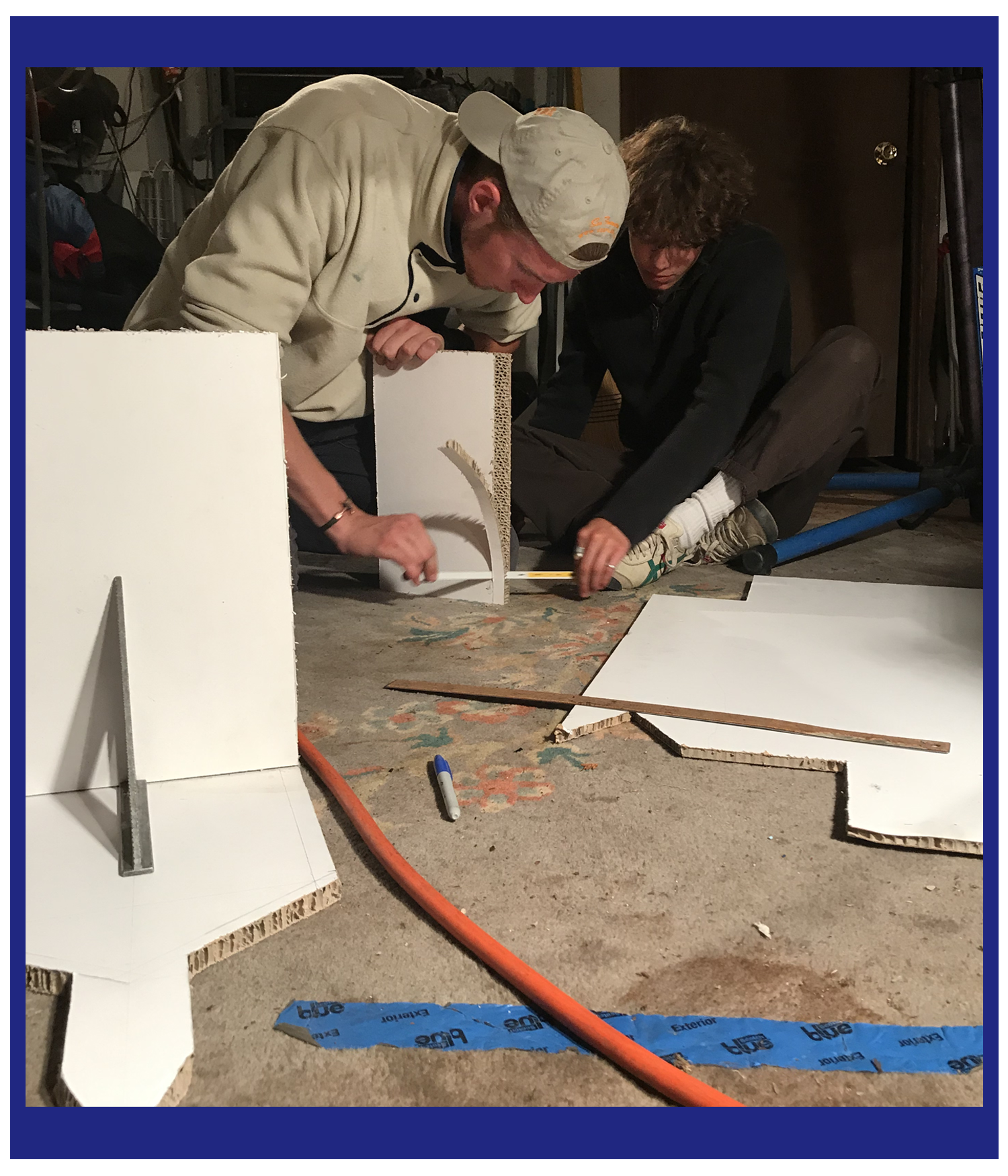
Claire Easton (she/her), who consulted on choreography for the episode finale, is a junior in Columbia College majoring in art history and English. She is originally from Los Angeles and busies herself with textile projects and illustration. Claire is also known for her style and thrifting prowess.
Lola Lafia (she/her), who provided the voice of Cressida the Chapel Dweller, is a junior at Columbia and the founder of Schefs, an online platform facilitating themed conversations hosted and attended by college students.
Ashalia Dawkins (she/her), featured as a beach guardian in the finale, is a freshman at New York University. Her focus of study is applied psychology, with an additional interest in business studies.
Maren Curtis (she/her), also featured as a beach guardian, attends CU Boulder and studies art and philosophy in the class of 2023. Her specific disciplines include drawing and painting along with some recent textile work.
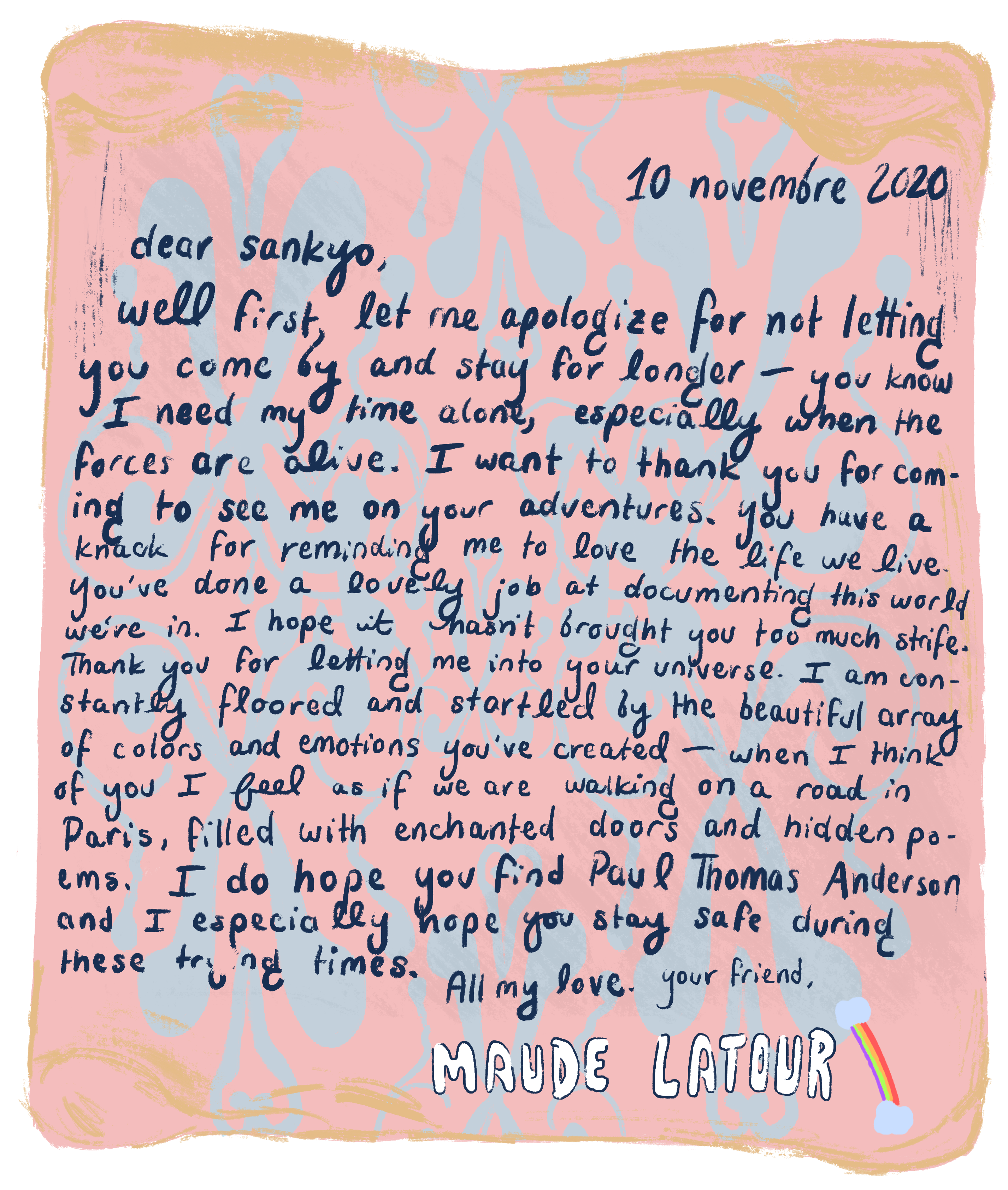
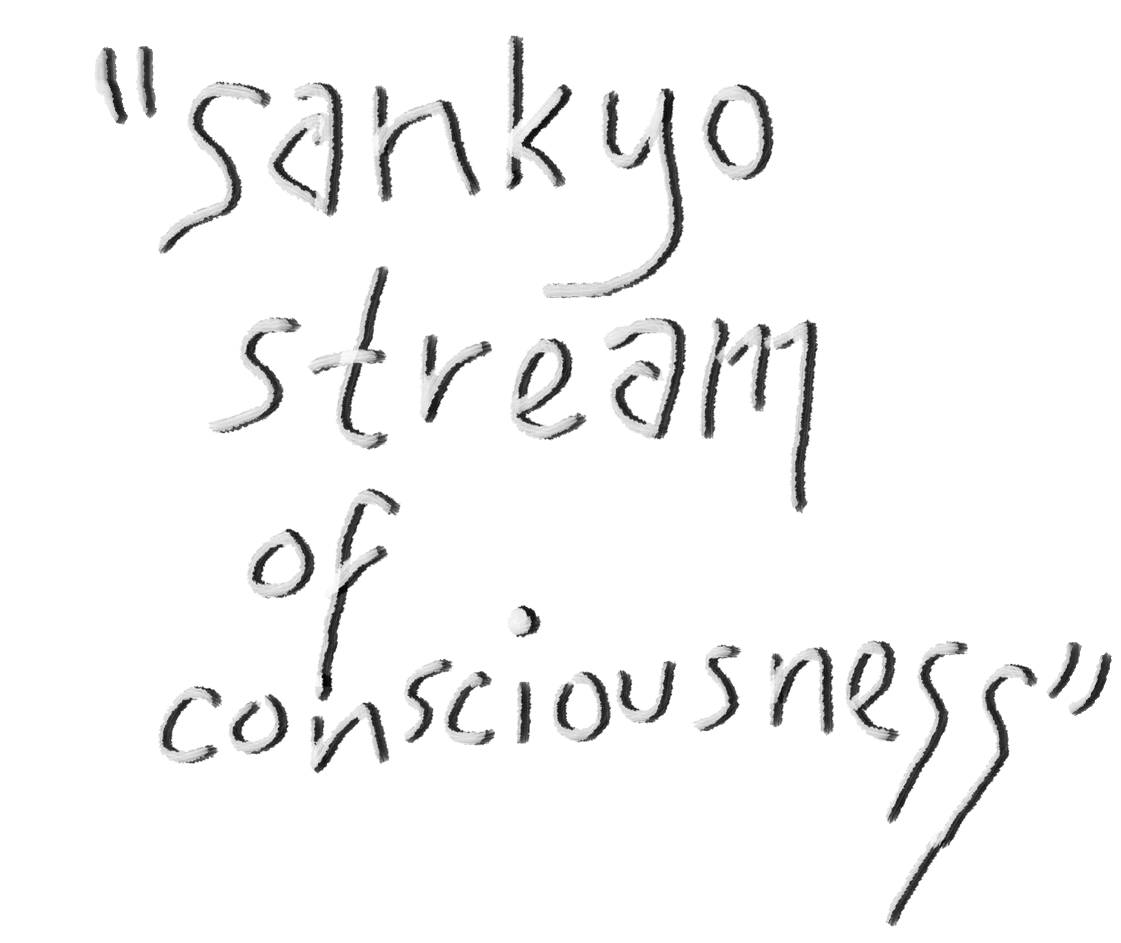
Playground sabotage, wheat fields, an interview with multimedia artist Alex Itin, creative rebalance.
Direction by Bella Barnes, an interview with journalist Alex Clark, dreams of Paris and cowboys.
Interviews with Kassia Karras, Malachi Jones and Joey Recker.
Espionage, Maude Latour, Wesleyan, tennis ballet.
Subway euphoria, disclaimers, an idea from Finch.